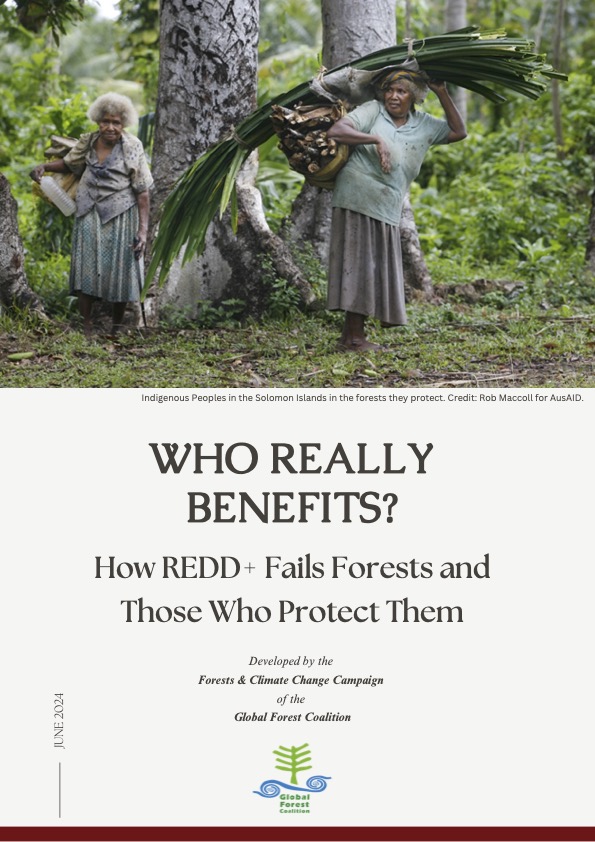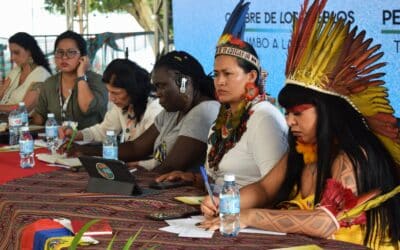In this new briefing from the Global Forest Coalition (GFC), launched at the UN Climate Change Conference (SB60) in Bonn, we unravel the confusions, contradictions and inherent issues with the REDD+ program.
Download the Briefing in English
Descargue el informe en español

Adopted at COP 19 in 2013, REDD+ (Reducing Emissions from Deforestation and Forest Degradation) aims to financially incentivize forest conservation in developing countries. However, this program was driven by developed nations, not the Indigenous Peoples and local communities who are the true custodians of forests. REDD+ commodifies forests, attaching market value to ecosystem services and allowing developed countries to offset their emissions by paying developing countries to supposedly reduce deforestation.
GFC’s new briefing looks at how REDD+ simplifies intricate forest ecosystems to a single metric: the carbon content in trees, or “carbon sinks.” This reductionist view commodifies the essential elements of life that forest communities rely on, transferring control over forests to powerful state and corporate entities. While community rights are theoretically protected, in practice, they often are not. Many instances lack genuine free, prior, and informed consent and the meaningful involvement of Indigenous Peoples, local communities, and women.
The briefing takes a closer look at the situations in Brazil and Indonesia, two of the greatest beneficiaries of REDD+ financing and countries with historically high deforestation rates. But as GFC’s briefing points out, while inherent flaws and variations in monitoring methods and definitions of forests make it very difficult to get an informed assessment of REDD+ and the program’s impact on deforestation rates, and despite billions of dollars of REDD+ funding, global deforestation still accounts for some 11% of CO2 emissions, a figure that has remained unchanged over the past decade.
The fundamental flaw lies in REDD+’s disregard for the historical and ecological roles of Indigenous Peoples and local communities in forest conservation. The REDD+ market-driven approach has overshadowed the actual goals of reducing deforestation and emissions, often neglecting the rights and sovereignty of Indigenous Peoples and local communities. Case studies show that REDD+ projects have led to displacement and land grabs, reducing communities to passive beneficiaries rather than active agents. Moreover, the focus on carbon has ignored other vital forest functions, potentially increasing social conflicts.
Given the persistently high levels of deforestation and forest degradation worldwide, along with increasing evidence of conflicts and rights violations in REDD+ projects, it is crucial to support and protect equitable and effective alternatives to REDD+. Climate finance must support real solutions that emphasize the importance of community-driven conservation, with an emphasis on Indigenous traditional knowledge and community stewardship, and of the deep knowledge and impact of women in all of their diversities, rather than investing in solutions that prioritize profit and economic “growth” over life itself.




